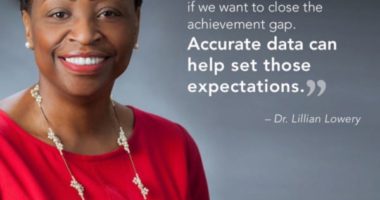New Ed Trust report shows several state accountability systems created through NCLB waivers weaken civil rights commitments of federal law
Some states “showed real courage” in the effort to move the needle on school improvement, but far too many “turn back the clock” for the students most frequently underserved
WASHINGTON (February 7, 2013) Nearly a year ago, U.S. Secretary of Education Arne Duncan began granting waivers from key school accountability provisions of the federal No Child Left Behind Act. Through this effort, the Department of Education offered states the opportunity to develop their own systems for accountability in exchange for implementing certain reforms.
But as a new analysis from The Education Trust shows, while some states adopted innovative strategies to raise achievement for all groups of children, what many proposed to do instead - and what the U.S. Department of Education ultimately approved - turns back the clock to a time when our national commitment to closing achievement gaps and improving outcomes for all students was little more than lip service.
”When it became clear that Congress couldn’t reach agreement on a long-overdue reauthorization of the law, we understood the consequences of not granting some kind of flexibility,” said Kati Haycock, president of The Education Trust, who will be testifying today at a Senate hearing on the waivers. ”But supporting the concept of a waiver process is very different from supporting how that process moved forward or the final agreements that resulted. In the end, while some states showed real courage in the effort to move the needle on school improvement, far too many were allowed to create systems that weaken the civil rights commitments of federal law.”
In A Step Forward or a Step Back? State Accountability in the Waiver Era, Ed Trust examines the key components of these new accountability systems and provides guidance for state advocates and others working to provide support and prompt meaningful action on behalf of their schools and students.
Among the highlights:
1. While most states set ambitious goals for raising student achievement and closing gaps between groups often expecting much more annual improvement than they got under NCLB most didn’t make performance against those goals actually count in school ratings.
Many states created accountability systems in which progress for all groups of students may be reported, but it isnt a core part of a schools rating. For example, New Mexico’s accountability plan would allow a school to receive an A rating, even if it consistently misses annual goals for its Native-American students, for example, or its English learners. By allowing this disconnect in many state agreements, the Department has rendered gap-closing goals for student subgroups - one of the hallmarks of NCLB - nearly meaningless for all but the lowest performing schools.
On the other hand, states like Minnesota avoided this pitfall by ensuring that the results for students overall and by subgroup are a significant component of school ratings.
2. Some states created “super subgroups” to ensure that schools with small numbers of students in a particular group - such as English learners or American-Indian students - did not escape responsibility for the achievement of those students. But many of the approved plans undercut the advantages of this approach.
In theory, using super subgroups holds more schools accountable for the performance of small groups. However, these averages could end up hiding more than they reveal, because few states put protections in place to mitigate this problem. For example, a school could make required progress by advancing English-language learners, but not students with disabilities.
The potential benefits are also negated when super subgroup performance doesnt matter much. In Indiana, for example, super subgroups are comprised of the lowest performing students in each school rather than the traditional subgroups outlined in NCLB. However, the performance of the super subgroup only counts for “bonus points” in a schools rating. And schools can earn an equal number of bonus points for growth among the rest of the student body. This means that its possible for a school to do well in the system even if its lowest performing students dont improve and gaps between low- and high-performing students get bigger.
3. States have been arguing for years that schools should be evaluated on multiple measures, not just state test results and graduation rates. But when given the opportunity to broaden the components of their accountability systems, few did.
To be clear, the guidance from the Department in this area opened the door to several non-academic indicators that could have done tremendous damage to the intent of federal law. But most states didn’t include additional measures in their accountability proposals at all.
Those that did rightly focused on ratcheting up college and career readiness in high schools. For example, Idaho’s high schools are now accountable for student participation and success in rigorous coursework like Advanced Placement and International Baccalaureate, as well as their performance on college-placement tests. Unfortunately, however, most states that include these indicators typically count only overall performance, thereby ignoring what are often wide gaps between student groups.
4. Most state plans for improving their lowest performing schools are steps forward from NCLB. But while they may be better, that doesn’t mean they are as good as they should be.
The plans for improving ”Priority Schools” stand in stark contrast to those required under current law, which followed a formulaic path for all schools, regardless of whether they missed their goals by a little or by a lot. But there are some aspects to these plans that still need attention.
While Massachusetts took a bold step by declaring that a districts performance rating is based on the designation of its lowest performing school, too many other states leave district responsibility vaguely defined. Equally important, many state plans dont spell out a clear course of action for schools that, after several years of receiving additional resources and support, still do not improve. In Maryland and Georgia, for example, lack of improvement only prompts more planning.
In addition, few states have clear plans for tackling equitable access to strong teachers and school leaders. One exception is Florida, which put forth explicit criteria for educators assigned to work in Priority Schools.
”Some states have a long, well-documented history of aiming for the lowest common denominator when given the latitude to set expectations, especially for their most vulnerable students. And in too many places, the waivers allowed more of the same,” said Daria Hall, director of K-12 policy at The Education Trust and author of the report. ”Several plans send mixed messages to educators and parents about what schools should be aiming for and whether they really need to focus on educating all kids to high levels. That makes it ever more important for advocates and others to take a close look at these plans and keep a keen eye on their state’s efforts.”
# # #



